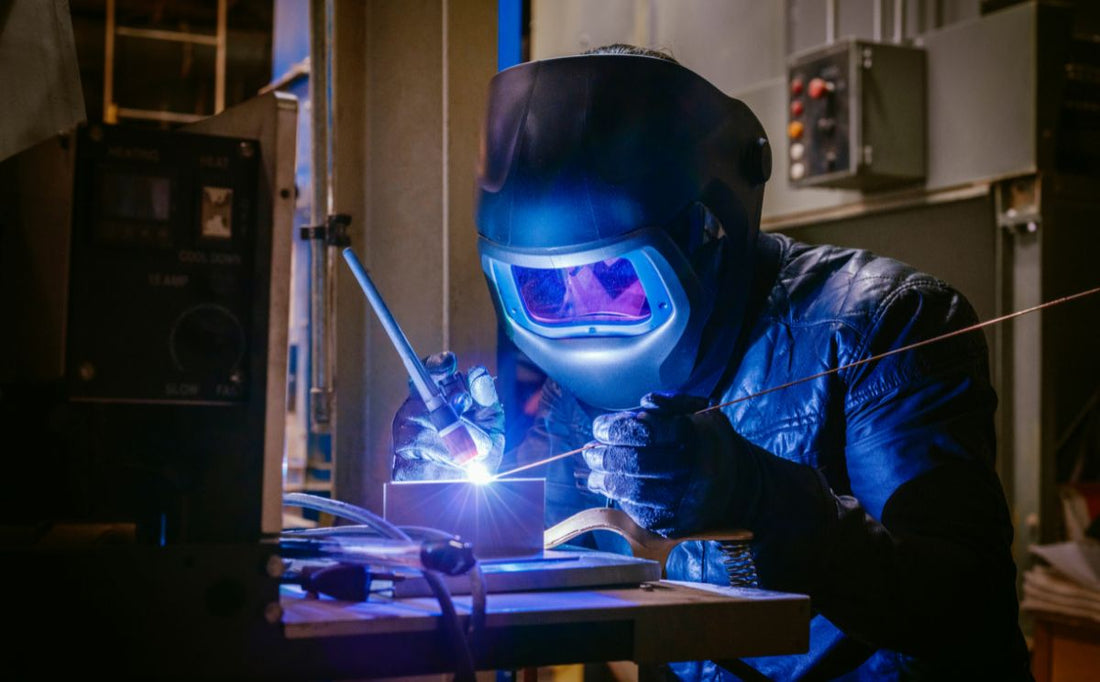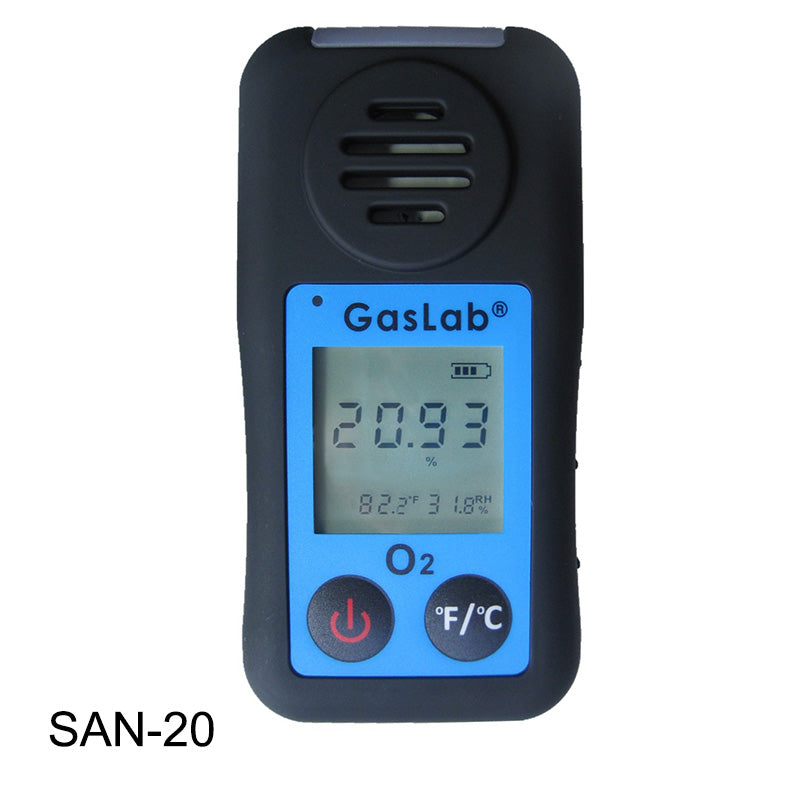
TIG welding can be safe if proper precautions are used. The four most common dangers of TIG welding metals like stainless steel are:
- UV light from the welding arc can damage eyes and skin
- Toxic fumes from molten metals
- Electric shocks from unsafe tools, water, working conditions
- Leaking shield gases can displace oxygen
What is TIG Welding?
TIG is short for Tungsten Inert Gas, and it is a common type of welding for used for stainless steel, aluminum, titanium and other non-ferrous metals. Also referred to as GTAW (gas tungsten arc welding) it is one of the most versatile methods of welding.
TIG welding uses electricity to create an arc between a tungsten electrode and the metal to be welded. The arc melts a filler rod of metal alloys. In order to make the weld as strong as possible, the arc where the tungsten electrode is closest to the metal and the filler rod is surrounded by an inert gas, typically argon. This “shielding gas” as it is known prevents atmospheric gases like oxygen from entering the pool of molten metal filler rod.
Is TIG Welding Dangerous?
The process of TIG welding of metals like stainless steel has several vectors for risk.
- The UV light given off is harmful to eyes and skin.
- The molten metal gives off molecules of metal and ozone which are harmful to respiration.
- The shield gas can displace oxygen and cause dizziness, nausea or fainting.
- TIG welding uses electricity which can be dangerous if not handled correctly.
Each of the dangers of TIG welding and precautions used to mitigate them are discussed below.
1. Eye protection during TIG Welding
The arc created during TIG welding gives off UV (ultra-violet) and IR (infra-red) radiation that are absorbed by the cornea and can even reach the retina of the eye. The UV given off by any electric arc welding is considerably more intense than sunlight.
To protect the eyes, a welding helmet is used during TIG welding. The helmet has a darkly tinted window in front of the eyes called a lens shade. The shade protects the cornea of the eyes from Photokeratitis or “arc eye” which is damage caused by too much UV light. Only a few seconds of exposure will result in "arc eye" although symptoms may not be felt for several hours.
In addition to protecting the eyes, the welding helmet protects the welder’s face and neck from the UV light which can cause damaging skin burns.
Fortunately, except in the most extreme cases arc eye can be treated with eye drops, pain medication and limiting further exposure to light (dark rooms, sunglasses, etc.) until the symptoms improve. Repeated exposure has been linked with cataracts.
2. Skin protection during TIG Welding
Skin reacts to exposure of high levels of UV radiation from TIG welding. Over time it will cause the equivalent of sun burn from staying out too long in the sun.
Like sun burn, TIG welding skin burn is caused by overexposure to UV radiation. However, unlike sun burn, the effects from TIG welding can happen in as little as 15 minutes.
The effects of UV radiation poisoning to the skin are well known. Ultraviolet radiation increases the risk of three types of skin cancer: melanoma, basal-cell carcinoma and squamous-cell carcinoma.
Fortunately, the solution is simple. In addition to eye, head, and neck protection from the welding helmet, gloves and long-sleeve shirts should be used during TIG welding.
3. Electrocution from TIG Welding
Because TIG welding uses electricity one would assume electrical shock would be a concern. Some welders using TIG have received a shock. However, because of the low voltages used it is almost impossible to be electrocuted during TIG welding.
The biggest danger reported for electric shock from TIG welding is water. Welding in the rain, in a high-humidity environment or even while dripping sweat should be avoided. Wet skin is a conductor. Therefore, the best way to avoid electric shock while TIG welding is to keep at least gloves and boots dry.
4. TIG Welding Fumes
A small but toxic by-product of TIG welding is the generation of ozone, nano-particles (less than 100 nm) and off-gassing of the molten metal. Nano-particles are especially harmful to human health because of their ability to penetrate inside the respiratory system and enter the blood stream.
A comprehensive study of the by-products of TIG welding done by the Swiss National Science Foundation found that student welders were exposed to high levels of aluminum, tungsten, silicon, sodium, magnesium and cerium which were off-vented by the metal being welded, the filler rod and the electrode. However, the amount of each element produced was related to the skill of the welder. Most of the particles were produced when the electrode touched the metal or filler rod. With training, this was lessened.
One chemical that was always present was ozone (O3). Even relatively low amounts of ozone can cause chest pain, coughing, shortness of breath and throat irritation. It may also worsen chronic respiratory diseases such as asthma and compromise the ability of the body to fight respiratory infections.
The study noted that even in a ventilated environment exposure exceeded averages found in traffic-polluted air. They also found that 15 hours of TIG welding fumes was the equivalent of smoking one cigarette.
All this has led some health researchers to claim a link between TIG welding and cancer.
While the long-term health effects of welding exposure to many of the chemicals and particles are not agreed upon, the safest solution would be to only weld in a well-ventilated area and to follow proper welding technique.
5. TIG Welding Shield Gas Exposure
TIG uses argon, carbon dioxide and other inert welding shield gases which can be dangerous if they displace the oxygen in a confined space. For example, welding may be required inside a stainless-steel container or in long sections of industrial pipe. Even in small TIG welding projects, the welder is only inches away from the plume of shield gas surrounding the work piece. Unless an effort is made the welder and support personnel in the vicinity can be exposed to an accumulated cloud of argon or carbon dioxide.
If safety is not central to the welding personnel, people in the area are subject to the effects of both high levels of shield gas and oxygen depletion.
The effects of elevated levels of argon and carbon dioxide are similar. Both are odorless and tasteless gases. High levels of exposure can lead to dizziness and nausea ultimately followed loss of consciousness, and death. Death may also result from confusion caused by the welder unable to rescue themselves. In 1994 a welder’s helper was asphyxiated after entering an oil pipe section that had been filled with argon for welding.
What are the long term effects of TIG welding?
Without proper safety devices and protocols in place, prolonged exposure to welding fume may cause severe health effects. These health effects can turn into long term issues such as lung damage, various types of cancer, fume fever, stomach ulcers, kidney failure, and nervous system damage.
TIG Welding Safety Monitors
Low Oxygen Safety Alarms
There are several safety monitoring solutions that can be used for TIG welding processes. These devices are aimed at protecting the welder and others in the vicinity from potential hazards associated with the welding process.
OSHA defines air that contains less than 19.5 percent oxygen as oxygen deficient. While OSHA does not have a Permissible Exposure Limit (PEL) for argon, if enough argon is present it may reduce the oxygen level to 19.5% or less. Therefore, safe argon levels can be monitored with an oxygen depletion safety alarm.
In addition OSHA has established a Permissible Exposure Limit (PEL) for CO2 of 5,000 parts per million (ppm) (0.5% CO2 in air) averaged over an 8-hour work day (time-weighted average or TWA). If an argon-carbon dioxide gas mixture is used for welding a combined CO2 and oxygen level safety alarm is recommended.
Portable Oxygen Safety Monitors
In cases where TIG welding takes place in a factory, a local exhaust ventilation system including a hood and ducted fan are recommended. In cases where the welder is working off-site or in an enclosed area they should use a personal oxygen safety monitor or in the most extreme conditions, use supplemental breathing air.









